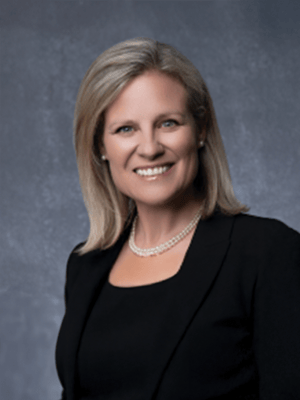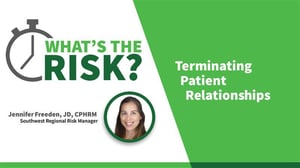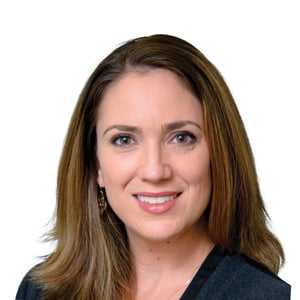July 2025
Anatomy of a Medical Malpractice Claim
Table of Contents



The Essentials of a Top-Tier MPL Claims Department
As changes occurred in the healthcare arena, the insurance industry responded by developing coverages to meet evolving needs. It is standard throughout the insurance industry that the majority of every premium dollar received by an insurance company is paid in claims, reflecting on the sizeable impact of claim handling. ProAssurance’s Claims department is designed to provide the depth of expertise and array of resources to respond to claims in the evolving healthcare industry.
Claims Specialists
Claims Specialists maintain a wealth of information on medical/legal issues and trends and are sensitive to emerging issues that could impact claim outcomes. As the course of a suit can be unpredictable and the idea of litigation, for many insureds, is unnerving, Claims Specialists help insureds navigate the litigation landscape. Members of the Claims department fulfill many roles—analyzing discovery, negotiating settlements, supporting insureds at trial—but at the forefront is serving as a reliable and knowledgeable resource. Insurance producers, policyholders, and insureds are encouraged to directly access our Claims Specialists, who value direct communication.
The Claims department has access to an array of litigation tools to benefit our insureds’ defense including jury consultants, mock trials, blind expert reviews, and trial exhibits. Our department is deeply engaged in innovation and technology, including exploring AI capabilities and maintaining a robust database for analysis.
Defense Counsel
The Claims department prioritizes retaining experienced, vetted trial attorneys with local expertise to represent insureds. As a trusted medical malpractice liability insurer, experienced attorneys pursue relationships with ProAssurance. Retaining the right defense attorney for each case is a pivotal decision. This responsibility is vested with our Claims team, who apply their knowledge of defense attorneys’ skills and experience to select the right attorney for each case.
Experts
As a long-term player in the industry, ProAssurance has experience with and access to highly qualified medical experts. The supportive opinions of credible and credentialed experts translate into a high-caliber standard of care and causation defense.
Our Team
Our dedicated Claims team is eager to assist our insureds in navigating the terrain of medical malpractice litigation by sharing our experience with the litigation process. We would be pleased to provide you with insight into the medical/legal issues affiliated with our cases so you can have a more thorough understanding. Our Claims Specialists often feel a deep connection to their work as they work side-by-side with insureds, frequently for years on a single case. We want to be a source of expertise for you and your team as we continue to build on our strong relationship with our agency partners.


Pleading Medical Malpractice as Negligence
States with laws limiting recovery of damages on medical malpractice cases are susceptible to a phenomenon in which claims historically pled as medical malpractice are sometimes strategically pled as ordinary negligence to avoid caps on damages and other limitations on medical malpractice claims. Depending on the state, a key indicator in deciphering the nature of the cause of action could be the plaintiff’s sole allegation of negligence rather than, for example, medical malpractice, professional negligence, or breach of the standard of care.
Despite the attempted repackaging of these lawsuits as ordinary negligence, these suits are often laden with facts and verbiage typically associated with medical malpractice claims and may omit reference to ordinary negligence or a reasonableness standard. At first blush, based on the medical malpractice context of the pleading, the reader may interpret the negligence allegations to mean professional negligence, but this interpretation may be in error.
It is important that the Defense scrutinize pleadings to ensure only appropriate causes of action are pled and vigorously oppose efforts to advance inappropriate causes of action. Early motion practice should be considered. The implications of defending a claim for negligence rather than professional negligence could be substantial. For example, depending on the state, a professional negligence claim may require the use of experts to support a claim, whereas an ordinary negligence claim may not require experts.
States with caps or limitations on medical malpractice damages may be more susceptible to this type of pleading error due to the enticement of unrestricted recovery if an ordinary negligence claim can be sustained.
Causes of action for negligence and professional negligence are sometimes pled in the alternative. We have seen instances in which judges determined the appropriate cause of action and other instances in which courts determined the jury would decide the issue. It is important to focus judges on the inappropriateness of pleading ordinary negligence claims where the issue to be decided is the appropriateness of medical care.
Melissa Kaplan, Director, ProAssurance Claims

Physician “Freak-Outs”: Notable Stressors for Physicians in Litigation
The practice of medicine is challenging enough without adding an unexpected malpractice claim and subsequent litigation into the mix. The word “litigation” may conjure up a range of emotions for physicians and other healthcare practitioners, without even getting into the details of the process. There is fear of reputational ruin or hefty settlements and accompanying self-doubt for physicians who have dedicated years of their lives to developing their training and providing the best possible care for their patients. It is easy to anticipate that the overall courtroom experience will not be a walk in the park for anyone forced to defend their practice and livelihood. But what are the parts of the process that may be particularly difficult?
We spoke with trial attorney Amy Schlotterer, Esq., of Schlotterer Law to get insight into some of the phases of a jury trial and the moments that often elicit anxiety or test morale for her defendant clients. This article follows Amy’s panel discussion at ProAssurance’s Marketing and Risk Management meetup in May.
Jury Selection
Amy explains that the initial process of a trial, jury selection, can present some surprises for her clients. “Physicians might have certain expectations when it comes to the jurors who will hear their case,” she says. “There’s a misnomer that the jury is going to be comprised of medical professionals or other persons that are similarly situated to the defendant.” The phrase, “jury of your peers,” helps facilitate this thinking, even if it is understood to mean fellow citizens of the county. To the physician, someone who is in a similar practice, with an advanced degree, or who has at least some level of clinical background, might have an understanding and empathy for that physician and what they are experiencing.
Clients begin to get nervous or second-guess the process when they learn the jury is comprised of individuals from a variety of educational, occupational, cultural and socioeconomic backgrounds. They might in fact have no interactions with the medical industry, or they may be unemployed. A physician may wonder what this set of strangers knows about his or her unique practice, and how they are qualified to make a decision on their claim. A physician who is foreign born, where English is not a first language, might feel even less of a connection with jurors.
Amy adds that physical appearances also play a part, at least initially, emphasizing potential reactions to piercings, hairstyles, or tattoos. “You realize these seven or eight people that have been impaneled are about to decide your case that you have lived with for the last two-plus years.” She is quick to point out that, of course, you can’t always judge a book by its cover, complimenting the commitment and great work jury members invest in the process. “Jurors listen to the facts and evidence. They then use the law that the court instructs them on, and they come up with a decision.” Ultimately, she says, doctors win more cases than they lose.
Other considerations that add more weight to jury selection in medical trials are the nuances in the standard of care for patients, and the technical jargon unique to different specialties of medicine. “They’re talking about complex medical issues, but also even the jury instructions are referencing standard of care and things related to proximate causation of a medical case.” These, Amy points out, can instill more uncertainty for her clients than in other types of cases (e.g., slips and falls, general liability) she defends.
After the Plaintiff’s Opening Statement
After jury selection, when the plaintiff’s attorney gives their opening statement, physicians often don’t anticipate the length of time involved. “The plaintiff may occupy 45 to 60 minutes reciting the facts and evidence as they see it, and physicians are not used to that,” Amy says. She explains that defendants are prepped on plaintiff arguments, their claims, and on who the plaintiff experts will be ahead of time. Still, when it comes time to hear the attorney speak, they’re caught off guard. “I think that they’re still hearing it through the lens of the defense attorney,” she says. There is no opportunity for a counterargument at this time, and the physician will not be able to argue or defend their side, even if they want to. It’s a long stretch of time, she emphasizes, and that can be unnerving.
There is also a tendency for the plaintiff’s attorney to employ some level of theatrics while relaying their version of events, Amy points out. “Most of the time judges tell you that opening statements are not arguments, but every good trial attorney does a fair amount of arguing in an opening statement.” The plaintiff’s attorney might attempt to convey the impact of a patient’s injury by demonstrating their physical limitations (e.g., showing difficulty putting on a jacket or in moving an affected joint). Utilizing props (like family photographs) or telling personal stories may elicit an emotional response from both the jury and courtroom audience. “That’s a moment where [physicians] tend to freak out as well,” Amy says. “I think that would be true of any civil defendant.”
Following the plaintiff’s statement, the defense has the chance to restore some balance with their own opening statement. “They understand that now we’ve given our version of the events, the other side of the story, so to speak, and they are much more happy.”
Closing Arguments
The closing arguments of a trial can be painful because of the claims alleged and what is at stake for the physician on trial. Generally though, they do not elicit the same kind of stress reactions in Amy’s clients because they are aware that after the plaintiff’s argument, it’s their turn to respond. However, as the plaintiff has the burden of proof in a civil case, they also have the opportunity for a rebuttal. This is the chance, Amy says, for that attorney to pack another emotional punch. They might show something previously unseen, such as a wedding photograph, or reiterate the impact of a patient’s death on family members, even on the plaintiff attorney themselves. There may even be tears shed. These could be tactics used that defense attorneys have seen before—but their clients haven’t.
There is also no counter. “It does seem unfair … The last thing the jury hears is the rebuttal, so that always is something that’s very difficult for our doctors.”
Jury Deliberations
Finally, it’s on to jury deliberations, and these take time. Sometimes quite a bit of time. Amy explains that deciding a case is not simply a matter of answering yes or no to the question, was the defendant negligent. What might seem, for the physician, likely to take 20 minutes can actually stretch into hours, sometimes days. “They think it should be a no-brainer,” she says, with a verdict in their favor. “But there is a process that’s part of jury deliberations.”
There is consideration of evidence, but there is also uncertainty among jurors about what actually constitutes evidence. The jury may request to see something (a deposition or a photograph used on cross-examination by the defense, for example) that was not offered or admitted into evidence and therefore may not be seen. Amy says these requests can spur the defendant physician to question why certain items are relevant for a jury, or why they would get to see some things and not others.
Some things that are just part of the deliberation process may seem like bad omens for a physician anxiously awaiting a decision on the fate of their practice. Extra delays can be one of those things, Amy states. “There are times where it takes hours, and it’s very unusual for there to be even a unanimous no cause verdict within an hour. There’s a whole thing that goes into it.” There is the selection of a foreperson, and there are lunch and bathroom breaks. For long trials with multiple witnesses and many exhibits, there is a lot to go through. “So we might be there three, four, four and a half hours, and it doesn’t mean that they’ve decided liability—it may not mean anything.”
Still, more time means more opportunities for second-guessing. “If it’s taking them a long time it must be bad,” the client might say. Or, they lament, “We should have made this argument…” Amy says that between hours two and five in deliberations become particularly challenging. “As the attorney you’re kind of doing a little freak-out yourself, and you’re starting to wonder if you could have done things differently too.” The reality, however, is that the process just takes time.
How Do They Cope?
Amy shares some ways she helps clients cope with the anxiety, and uncertainty, of a jury trial:
Recap
Right after the case we talk about everything. We make sure that they were satisfied with everything. We make sure that we get the positive statements, and that we covered everything in our closing. We did a really good job. We’re in the hunt. We make sure that the defendants feel that same way.
Just a Feeling
When they start to be anxious—it can be helpful for the doctor when we can say, “Remember, as we discussed, we put on this evidence.” You can redirect them to how this is just anxiety because we’re waiting, but in real time we did feel as if we got all our points out. We can’t ever guarantee anything.
What’s Next?
The other thing that we go through is, there’s always next steps, even if there’s a verdict for the plaintiff. There are always potential appeals. There are always ways to try to get the matter resolved. So you normally get the claims adjuster involved or the claims lead specialist involved in talking to the insured. If they start to get a little anxious during jury deliberations, we try to make sure Claims is involved so they can kind of calm the physician as well.

|
Amy Schlotterer, Esq., of Schlotterer Law in Southfield, Michigan, is a trial attorney with experience in multiple areas including professional liability and medical malpractice, dental malpractice, and civil rights. A member of the American Board of Trial Advocates and on the leadership committee of its Michigan Chapter, Amy is also a Fellow of the Michigan State Bar Foundation. Amy leads a collaborative team of attorneys at her firm and also works as a lecturer for medical and dental students. |

Risk Management Resources Amid a Claim
While the ProAssurance Claims team helps insureds and agency partners through the entirety of a potential claim, the MPL Risk Management team also has resources available. These range from what steps a medical professional can take if an adverse event occurs to the potential stress one can experience during litigation. All of these resources, and other risk mitigation materials, can be found on the MPL Risk Management site.
SAMPLE RESOURCES
Litigation Stress and Burnout Bundle
Stress—whether it is situational or long-term (commonly referred to as “burnout”)—is an ongoing challenge for practicing physicians and healthcare professionals. Working conditions, including staff shortages and heavy workloads, and the reality of a litigious environment, can all contribute as ongoing stressors in healthcare settings. The National Institute for Occupational Safety and Health (NIOSH) and other organizations have been instrumental in raising awareness about workplace stress. These groups are prescribing actionable approaches for healthcare leaders and organizations to help them improve the well-being of workers.
Disclosure of Adverse Events
This resource includes a general guideline an insured can follow when communicating with the patient or family after an adverse event as well as documenting the discussion.
2 Minutes: What’s the Risk? “Unexpected Outcomes”
While healthcare providers do not intend to cause harm, unexpected outcomes can occur. However, a regrettable result does not mean that there was negligence. This video addresses how prompt and honest communication can have an impact on whether the unanticipated outcome will lead to a lawsuit.
Medical Error: A Defense Attorney’s Perspective on Disclosure
In this webinar, nationally recognized defense attorney Billy Bates shares strategies for mitigating risk after an unanticipated outcome. When a patient has an unexpected complication, the question often arises, what drives that patient or their family member to a lawyer to file a lawsuit? “There are more things physicians can do to prevent a lawsuit in the aftermath of a complication than they would ever really believe.” The healthcare team, including the doctor, has the ability to influence whether that happens.
Medical Error: Reducing Liability Risk by Changing the Narrative
Medical errors don’t always result in a lawsuit, but they each present an opportunity to prevent a similar error in the future. This webinar was inspired by Dr. Danielle Ofri’s book, When We Do Harm: A Doctor Confronts Medical Error. In the webinar, Dr. Ofri shares strategies for preventing and mitigating the effects of medical errors.

Guiding the Insured Through the Claims Process
When a claim arises, your clients rely on you to help them navigate what can feel like unfamiliar and high-stakes territory. As a trusted partner, your ability to confidently guide them through the claims process is essential. Here’s what you need to know to help support an insured facing a potential or actual claim.
Is This a Claim or a Risk Management Concern?
Not all questions warrant a claim report. Sometimes, the insured just needs advice. Whether your client is asking a hypothetical question or is seeking guidance on a medical practice issue, our Risk Management team is available for assistance.
If the insured is:
- Asking a hypothetical legal or practice-based question
- Concerned about dismissals, difficult patients, or an unexpected outcome
- Seeking advice unrelated to a specific incident
Have them contact the Risk Management Helpline:
- 844-223-9648 (Monday through Friday, 8:00 a.m. to 5 p.m.)
- RiskAdvisor@ProAssurance.com
The links listed below address frequently asked questions:
Reporting a Claim or Incident
A claim or potential claim should be reported to our Claims team immediately if the insured has experienced or received:
- Any legal document, including a complaint, subpoena, or deposition notice
- A licensing board inquiry
- A notice of intent to sue
- An adverse patient event
- Allegations of negligence, misconduct, or injury
Report the claim or incident using the following methods:
- 877-778-2524 or
- ProAssurance.com/Report-a-Claim or
- ReportClaim@ProAssurance.com
What Happens Next
Once a claim is submitted:
- A Claims Specialist will be assigned.
- The specialist will make contact with the insured.
- Defense counsel will be assigned, as needed.
- The specialist will maintain ongoing communication with the insured.
“The claims process is very collaborative among Claims staff, attorneys, and insureds,” says Jake Smith, Senior Claims Specialist, noting that ProAssurance Claims Specialists meet with insureds and attorneys regularly throughout the course of a claim. “This includes pre-deposition meetings and attending depositions. This ‘extra set of eyes’ throughout the claims process allows Claims staff to not only assist counsel but also helps ensure that our insureds are treated fairly. This aspect of the claims process helps ProAssurance to ensure exceptional outcomes for our insureds.”
Important Tips from Our Claims Team
Helping your client respond appropriately can help preserve their coverage and strengthen their defense. We asked several team members from our Claims department for advice in this area, and they provided the following important tips you’ll want to share with your clients:
DO report incidents and claims immediately.
- The sooner the better! — Vicky Gould, Vice President, Regional Claims
- The timely reporting of a claim or incident is vital. In many instances, there are strict deadlines associated with legal claims or notices that must be followed in order to avoid an adverse ruling or judgment against an insured. Further, untimely reporting may void insurance coverage in some circumstances. — Sharon Rupprecht, Senior Claims Specialist
DO maintain original medical records securely.
- It is important to preserve all information for future use in litigation. This includes all of your records, medical records from other providers, telephone messages, e-mails, and photographs. Remember that some e-mail accounts have retention policies wherein e-mails are automatically deleted after a period of time, so it is important to scan these to the EMR or print them to place in the paper chart. Telephone messages that are not maintained in the EMR should also be scanned or placed in the paper chart. E-mails and phone messages show important interaction between the insured and their patient. — Beth Morrow, Lead Claims Specialist
- Medical records are the primary evidence in a medical malpractice case, as they can provide crucial insight into the care and treatment rendered by a healthcare provider. Any missing, altered, destroyed, or misplaced medical records could eliminate information related to the defense of a case and could also be interpreted as evidence tampering. — Sharon Rupprecht, Senior Claims Specialist
DO cooperate fully with the Claims Specialist and legal team.
- Help us help you. — Alexandria Hagelston, JD, Claims Specialist
- It always works better when we work together. — Vicky Gould, Vice President, Regional Claims
- The Claims Specialist and defense counsel can only provide effective representation on an insured’s behalf if they receive full and honest information from the insured. As a medical professional, they are the best expert for the defense of their case. It is important for them to help their attorney understand the medicine and their clinical reasoning in the treatment of the patient and to help develop an evidence-based defense. Further, as a party to a lawsuit, they are legally obligated to participate in their own defense, including depositions, discovery, and trial preparation. — Sharon Rupprecht, Senior Claims Specialist
DO refer non-claim practice questions to Risk Management.
DON’T alter medical records—this can jeopardize coverage.
- Even with good intentions, opposing counsel uses this as an opportunity to question the insured’s credibility — Alexandria Hagelston, JD, Claims Specialist
- Maintaining the integrity of the insured’s records is essential. Altering records—even with good intentions—would be interpreted as an attempt to conceal evidence and likely would be used against the insured in court. — Vicky Gould, Vice President, Regional Claims
- It’s crucial to maintain the integrity of the original documentation and mount a defense using the record as it stands. — Sharon Rupprecht, Senior Claims Specialist
DON’T file legal documents in the patient chart.
- The legal process is confidential between the insured, their Claims Specialist, and their attorney. If any report is not kept confidential, then anyone has access to it and privilege is broken. — Alexandria Hagelston, JD, Claims Specialist
- Discussions with the insured’s Claims Specialist and defense attorney are considered protected under attorney-client privilege and are not discoverable in litigation. However, if those privileged discussions are memorialized in the medical records, they are no longer considered protected but rather part of the patient’s medical records, and opposing counsel may use that information in their case against the insured. — Sharon Rupprecht, Senior Claims Specialist
DON’T document internal legal discussions in clinical notes.
- The medical record needs to be kept untouched. It will be a discoverable document throughout the legal process and needs to reflect exactly what happened at the time of the incident. No discussions afterward need to be a part of it. — Alexandria Hagelston, JD, Claims Specialist
- Do not mix legal documents or related correspondence within the medical records. If medical records are subpoenaed, they could end up revealing defense attorney’s case strategy. — Vicky Gould, Vice President, Regional Claims
- A patient’s medical record should only contain objective information regarding the patient’s care and treatment. Storing the written claim and legal documents in a separate confidential file will preserve the integrity of the patient’s record and prevent the inadvertent disclosure of privileged legal information. Furthermore, legal documents and correspondence between a physician and attorney are protected by attorney-client privilege. However, inadvertent production of legal documents along with the medical record could waive the attorney-client privilege, and the confidential legal information could then be used by opposing counsel. — Sharon Rupprecht, Senior Claims Specialist
DON’T editorialize in the record—stick to objective facts.
- Opposing counsel looks specifically for any instance to question the insured’s credibility. While comments may seem innocent, anything too personal can be used against them. — Alexandria Hagelston, JD, Claims Specialist
- Medical records are legal documents that should only reflect clinical facts about the care and treatment of the patient. Subjective or inappropriate comments can undermine the perceived credibility and professionalism of the medical provider and could be harmful to the defense at the time of deposition and trial. — Sharon Rupprecht, Senior Claims Specialist
DON’T discuss the case with anyone except ProAssurance or assigned legal counsel.
- Any conversation the insured has with their attorney or their ProAssurance representative is protected by attorney-client privilege. Any conversation they have with others is discoverable and can be introduced into the litigation. For example, if they discuss their case in passing with a colleague, that conversation is not protected and they would have to disclose it, if asked, during their deposition. This would likely result in the colleague being deposed. If that person was not privy to all the facts in the case, one may draw a conclusion contrary to the treatment the insured rendered. Our goal is to preserve the facts and evidence in the case and to avoid such distractions. — Beth Morrow, Lead Claims Specialist
- Caution the insured to rely on the Claims Specialist and the assigned attorney if you have any questions. The most important part of our job is to make sure each insured understands our commitment to their well-being throughout what can sometimes be an arduous process. — Vicky Gould, Vice President, Regional Claims




If the insured is asked to release patient records, keep the following in mind:
- The request to release records must be made in writing.
- The request must come from the patient or their legal representative.
- The request must include a signed, HIPAA-compliant authorization.
If in doubt, contact our Claims department at 877-778-2524.
Provide the following information when submitting a claim report:
- Claim reporter’s full name and phone number
- Insured’s full name, policy number, and practice state
- Practice name
- Patient/claimant name and DOB
- Date of occurrence and summary of allegations
- Any legal documents received
- Indicate if the matter has been reported before
Contact Your Regional Claims Leadership Team
| WEST | Gina Harris - Regional Claims Executive | 702-697-6424 | GinaHarris@ProAssurance.com |
| SOUTHWEST | Laura Ekery - Regional Claims Executive | 512-314-4360 | LauraEkery@ProAssurance.com |
| MIDWEST | Mike Reynolds - Vice President, Regional Claims | 517-347-6290 | MikeReynolds@ProAssurance.com |
| SOUTHEAST | Tara Bostick - Vice President, Regional Claims | 205-337-2351 | TaraBostick@ProAssurance.com |
| NORTHEAST | Mark Lightfoot - Regional Claims Executive | 202-969-3102 | MarkLightfoot@ProAssurance.com |
Cyber liability protection with CyberAssurance® Plus is included in certain MPL policies, and expanded cyber coverage is offered through ProSecure. Both are underwritten by Tokio Marine HCC. To report a claim:
- Collect the information from the Claim Report Checklist and email it to ReportClaim@ProAssurance.com
- Call 818-382-2030 (8 a.m. to 5:00 p.m. PT)
- Call 888-627-8995 after regular business hours, on weekends, or on holidays

Legal Definitions
Each element must be proven by the plaintiff to be successful:
- Duty of Care owed to the patient by the defendant.
- Breach in the Standard of Care.
- Cause – Did the defendant’s breach in the Standard of Care cause damages to the plaintiff?
- Damages – Harm (physical, emotional, or financial) caused by the defendant’s action or lack of action.
A formal, written statement that provides the receiving party notice of the initiating party’s intent to pursue legal action. The notice lays out the cause of action. It is required in multiple states prior to the filing of an actual lawsuit.
Also referred to as a Petition in some states, a complaint is a document filed with the courts that outlines the allegations and basis of the claim against the defendant.
A written sworn statement.
A formal oral sworn statement taken out of court. A deposition is taken at a formal meeting when all attorneys and a court reporter are present. Only one witness is questioned at a time. The questions and responses are documented by the court reporter.
An individual with specialized knowledge and called to provide testimony in court. They are also required to sit for a deposition.
In the context of medical malpractice, the failure to exercise the standard of care.
Actions that go beyond the failure to exercise the standard of care. Showing reckless disregard for the safety and well-being of others.
MPL File Types & Definitions
Precautionary report of a medical incident where it is determined that an investigation is not warranted at the time of report.
- No reserves set; no assignments made.
- Eligible for upgrade to: Incident, Claim, Pre-Suit*, or Suit.
Report of a medical incident that has the potential for litigation and requires further investigation.
- Initial reserves set; assignments made.
- Eligible for upgrade to: Claim, Pre-Suit* or Suit.
Written or verbal demand for compensation related to perceived damages without formal litigation having been filed in a court venue. Policy determines if written or oral demand triggers coverage.
- Initial reserves set; assignments made.
- Eligible for upgrade to: Pre-Suit* or Suit.
Notice of intent required by certain states (e.g., Michigan, Indiana, Texas, Florida, California) prior to formal litigation being filed.
- Initial reserves set; assignments made.
- Eligible for upgrade to: Suit.
*Pre-Suit files are not used in all regions.
Formal litigation brought against one or more insured parties that alleges an error or omission and includes a demand for compensation related to perceived damages.
- Initial reserves set; assignments made.
- Not eligible for upgrade.
Expenses incurred due to a question of available coverage for a reported incident or the need to file declaratory judgment. The Legal department in Birmingham and/or designated local staff investigates and engages coverage counsel accordingly.
- Initial reserves set; assignments made.
- Not eligible for upgrade.
Claim for bodily injury (general liability only) caused by an accident at or next to a facility. Payment will be made regardless of fault if reported within one year of accident, subject to reasonableness and policy limits and exclusions.
- Initial reserves set; assignments made.
- Not eligible for upgrade.
Legal expenses incurred due to an event as defined in the Professional Legal Defense Coverage section of the policy. Expenses incurred are considered indemnity, as specific limits are set forth by the endorsement.
- Initial reserves set; assignments made.
- Not eligible for upgrade.
Reimbursable legal expenses incurred due to a disciplinary proceeding brought against an insured party as described in the Legal Expense section of the policy. Expenses incurred are considered indemnity, as specific limits are set forth by the endorsement.
- Initial reserves set; assignments made.
- Not eligible for upgrade.
File set up in error or file type selected incorrectly and requires a downgrade or change to an ineligible file type.
- No payments can exist on the file; no assignments made.
- Not eligible for upgrade.
Ohio only. A statute extension for exploratory purposes only. It is not a complaint. Most letters reference statute 2305.11.
- No reserves set; no assignments made.
- Eligible for upgrade to: Incident, Claim, or Suit.
MPL Association Awards Billy Bates of Starnes Davis Florie with 2025 MPL Industry Defender Award
Walter W. “Billy” Bates, a partner at Starnes Davis Florie in Birmingham, Alabama, and practicing attorney for 44 years, has been devoted to the defense of professional liability healthcare cases, including those for physicians, hospitals, and various healthcare individuals and entities. He has tried in excess of 140 complex civil cases to jury verdict. He is a Fellow of the American College of Trial Lawyers and a Diplomate of the American Board of Trial Advocates, where he served as President of the Alabama chapter. He is ranked as a Tier One litigator by Chambers USA in the category of medical malpractice defense and has been regionally selected as the The Best Lawyers in America “Medical Malpractice Defense Lawyer of the Year” on multiple occasions.

The Bind Order
This selection of accounts ProAssurance bound recently is intended to give our partners tangible examples of risk classes we’ve been successful quoting and that we’d like to see more of. These examples are anonymized with final premium rounded, but otherwise present actual accounts.
PERINATAL
Georgia Limits: 1M/3M
E&S Premium: $317,100
WOUND CARE
Nevada Limits: 1M/3M
E&S Premium: $146,500
OTOLARYNGOLOGY
California Limits: 1M/3M
E&S Premium: $37,500
ADDICTION MEDICINE
Indiana Limits: 500k/1.5M
Admitted Premium: $10,900
ORTHOPEDIC SURGERY
Missouri Limits: 1M/3M
Admitted Premium: $445,600
RADIOLOGY
Nevada Limits: 1M/3M
Admitted Premium: $28,500
CARDIOVASCULAR DISEASE
Florida Limits: 250k/750k
Admitted Premium: $11,200
NEUROLOGY
Texas Limits: 200k/600k
Admitted Premium: $9,400
ANESTHESIOLOGY
California Limits: 2M/4M
Admitted Premium: $11,900
CARDIOLOGY
Pennsylvania Limits: 500k/1.5M
Admitted Premium: $8,500
GYNECOLOGY
Georgia Limits: 1M/3M
Admitted Premium: $12,500
RADIOLOGY
Nevada Limits: 1M/3M
Admitted Premium: $9,000
SURGERY CENTER
Indiana Limits: 500k/1.5M
E&S Premium: $50,900
SKILLED NURSING
Tennessee Limits: 1M/3M
E&S Premium: $190,700
WOUND CARE
Texas Limits: 200k/600k
E&S Premium: $12,000
AMBULATORY SURGERY
Ohio Limits: 1M/3M
E&S Premium: $18,700
New Business Submissions
Our standard business intake address for submissions is Submissions@ProAssurance.com. For specialty lines of business, please use one of the following: CustomPhysicians@ProAssurance.com, Hospitals@ProAssurance.com, MiscMedSubs@ProAssurance.com, and SeniorCare@ProAssurance.com. Visit our Producer Guide for additional information on our specialty lines of business.
The types of business and premium amounts are illustrative of where we have written new business and not intended to reflect actual pricing or specific appetites.
.png?width=300&name=MicrosoftTeams-image%20(28).png)
As the pace of medical professional liability (MPL) mega verdicts shows no signs of slowing down, the MPL defense bar is reaching an inflection point. The experienced lawyers who have represented carriers for more than 25 years are nearing retirement age, creating space for the next generation of MPL lawyers to make their mark. (MPL Association)
The 2025 Top 10 features many first-time topics, and emphasis is on potential risks that could have the largest impact on patients. This year's number one topic has led to misdiagnoses and delayed treatment of patients: risks of dismissing patient, family, and caregiver concerns. The growing challenges healthcare professionals face in managing complex patients, using multiple communication technologies, and working within time constraints can hinder empathetic, patient-centered care. This environment can lead to medical gaslighting, where clinician biases or misconceptions may result in dismissing patient symptoms, which may also be exacerbated by communication challenges. (ECRI)
The Joint Commission has unveiled an overhaul to its healthcare accreditation and certification process that will cut hundreds of requirements for hospitals, streamline patient safety practices, and give stakeholders as well as the public a clearer look into what’s expected of an accredited facility. (Fierce Healthcare)
Just over 42% of physicians worked in private practices in 2024, representing an 18 percentage point drop compared to 2012. Meanwhile, more than a third of the nation’s physicians worked in practices owned by hospitals last year, representing an 11 percentage point gain over the same period. Nearly 7% of doctors worked in firms owned by private equity, an increase compared to 2020. (Healthcare Dive)
Researchers at the University of Leicester reviewed 46 studies examining whether communication failures contributed to safety events—including adverse events, near misses, medical errors, and medication errors. The studies involved data from 67,639 patients across Asia, Australia, Europe, and North and South America. Of the 46 studies, 42 explored poor communication alongside other contributing factors. In those, poor communication contributed to 24% of safety incidents. The remaining four studies focused solely on communication errors, determining they directly caused 13.2% of incidents. (Becker’s Clinical Leadership)

Sales, Claims, and Second Chances: Lessons from a Lost Sale

When you offer the best coverage available—just like a physician delivering top-tier treatment—you expect a predictable outcome (i.e., the sale!). But selling doesn’t always go as planned. Even when your coverage is clearly the better choice, HCPs sometimes make the wrong decision.
Analyzing why you lost the business can feel eerily similar to investigating a malpractice claim. You retrace your steps, examine what happened, consult with experts, and hopefully emerge wiser and better prepared.
Let me take you through a sales opportunity I should have won and what I learned by performing a full-blown sales postmortem.
1. The Incident
I received a call from Dr. Ben’s office, an orthopedic surgeon with whom I hadn’t done business. The doctor wanted to see my company’s unicompartmental (uni) knee. He was inviting three representatives, including myself, to present our systems to him simultaneously—a triple-rep sales showdown.
While I wasn't comfortable sharing facts about my products in front of competitors, I felt confident. No other sales rep knew uni knees as well as I did.
The first rep pitched. No sparks. Then, I confidently delivered my presentation, highlighting survivorship and clinical superiority. I could see the doctor was impressed.
Bill, a veteran rep, deferred to go last. He began, “Dr. Ben, when we spoke about this yesterday, you mentioned concerns about accurate cuts and correcting the patient’s varus deformity. Are there any other goals or concerns?”
Wait—they spoke beforehand?
Bill spent the next 10 minutes laser-focused on the doctor’s top concerns: deformity correction and precision cuts. While I promoted my system’s features, Bill addressed the doctor’s actual needs.
Guess who got the case?
Dr. Ben commented, “Mace, you have a nice system, but it’s indicated for only up to 5 degrees of deformity. I need to correct 15.”
I reacted. “Dr. Ben, the literature is clear about not correcting more than 5 degrees of deformity with a uni.”
He asked, “Do you have that paper with you?”
I didn’t.
He replied, “Then you probably shouldn’t tell a surgeon what he can or can’t do.”
2. The Discovery
Like a Claims specialist reviewing charts, I dissected the sales call—how I prepared, what I said, what Bill said, and how the doctor reacted. I made notes on everything.
3. The Expert Review
I called the uni knee product manager, Mark, and told him what happened. He confirmed I was right about the deformity limitation—and that Bill likely ran through the entire sales conversation privately before publicly playing to the doctor’s ego.
4. The Resolution
Months later, Dr. Ben called me in. His patient hadn’t done well with the uni and required a revision to a total knee. Having done the research, he admitted that my earlier comments were correct. He wanted to reconsider my system for his upcoming patients.
5. The Risk Mitigation
I learned three things to avoid a similar blunder:
1. Contacting the customer ahead of time to understand their specific concerns? Totally legit—and smart.
2. Bring proof. If you’re going to cite literature, have it ready.
3. Don’t wait. If a customer makes the wrong decision, respectfully follow up with facts before a bad outcome happens.
The Takeaway
Even when offering the best coverage, you may still lose the sale. But if you take the time to investigate what went wrong, you not only become a better agent, you give your clients and prospects a better chance next time. And just as with claims, the truth usually comes out in the end.

|
Written by Mace Horoff of Medical Sales Performance. Mace Horoff is a representative of Sales Pilot. He helps sales teams and individual representatives who sell medical devices, pharmaceuticals, biotechnology, healthcare services, and other healthcare-related products to sell more and earn more by employing a specialized healthcare system. Have a topic you’d like to see covered? Email your suggestions to AskMarketing@ProAssurance.com. |

Risk Management July Releases
Live webinar - The Watchdogs of Medicine: Administrative and Regulatory Actions and Reducing Risk Exposure
Thursday, August 21, 2025, at 7 p.m. ET / 6 p.m. CT / 4 p.m. PT
This presentation examines three areas of regulatory and administrative actions: licensing board investigations, medical peer reviews, and federal governmental healthcare claims. A tie binds each of these three categories of claims: they fall under insurance coverage known as either medefense, administrative, or legal coverage provided by your professional liability carrier. We’ll touch on the processes employed by each of these "watch dogs of medicine," related closed claims reviews, and risk reduction strategies. Implementing the risk reduction strategies in this presentation can help reduce the risk of regulatory and administrative claims and better position physicians to defend against them if they arise.

Generally, vicarious liability allows injured patients to hold third parties—such as employers, supervising physicians, or those overseeing contractors—financially responsible for another’s negligence. While injury prevention is the best risk management, applying this article’s recommendations can reduce liability risks and strengthen malpractice defenses.
Read the issue
The healthcare landscape includes ever-changing issues with medications. This program addresses several current topics related to medication issues including shortages, off-label prescribing, and more. Providers will gain an overview of these topics, receive risk reduction strategies to promote, and enhance patient safety while mitigating liability risks.
Watch a preview
The program presents a review of adverse events that occur in the ambulatory setting to show how issues may lead to patient harm and potential claims. It will present examples of adverse events, provide tools for reporting and investigation, and offer risk mitigation strategies to help prevent recurrence and improve patient safety.
Watch a preview
This episode discusses disclosure following adverse events in healthcare. It explores the definition of disclosure, its importance in maintaining trust between healthcare providers and patients, and the key principles guiding effective communication. The conversation underscores the importance of transparency, the role of apologies, and the necessity of accurate documentation.
Listen here
Allegation
Plaintiff’s family alleged failure to appropriately assess fall risk, implement fall interventions, and treatment plan resulting in three falls, fractured hip requiring surgery, and ultimate death.
Read the issue
Patient termination is an unfortunate but sometimes necessary step when the relationship is no longer beneficial or safe. Following the guidance discussed will create firmer footing to move forward with this difficult decision.
Watch hereInspiring Customer Loyalty: 2025 Retention Campaign
 Prioritizing our marketing efforts to acquire and retain customers includes looking for ways to further develop relationships. Each year we offer our insureds a complimentary resource related to their field, usually a book, as part of our annual retention campaign. It’s a way to say thank you for your loyalty.
Prioritizing our marketing efforts to acquire and retain customers includes looking for ways to further develop relationships. Each year we offer our insureds a complimentary resource related to their field, usually a book, as part of our annual retention campaign. It’s a way to say thank you for your loyalty.
The initiative involves a series of direct mailings and emails. In the past we’ve seen great success, with reply rates of up to 25%. At the conclusion of each campaign, we measure the retention rate for those who requested the book against non-responders and have seen an up-to-10% bump for those who reply.
This year’s complimentary book is When Good Doctors Get Sued: A Practical Guide for Physicians Involved in Malpractice Lawsuits by Angela M. Dodge, PhD, with Steven F. Fitzer, JD.
According to the American Medical Association, 1 in 3 physicians will report being sued at some point during their career. This does not make them bad doctors. Regardless of the allegations against a physician, facing a lawsuit is a frightening and confusing event. Likely concerned by accusations of wrongdoing and fearful of possible repercussions, many medical professionals feel they have few places to turn for the advice and support they need during the litigation process.
When Good Doctors Get Sued is a practical guide to help physicians understand the complexities of a lawsuit, prepare for a deposition or trial, and avoid common legal pitfalls. Forewarned is forearmed, and an informed and well-prepared witness is a powerful defendant.
If you’d like to read the book yourself, email AskMarketing@ProAssurance.com letting us know your mailing address. We will provide ongoing campaign updates in future issues of ProVisions.
Introducing the Speakers Bureau
ProAssurance’s Risk Management department includes professionals with a wide range of healthcare and/or legal experience. Our team is available to present virtually or in person on a variety of medical malpractice, healthcare risk reduction, and patient safety topics.
You are welcome to request a member of our team to present at your events or recommend our services to your clients. An overview of our featured speakers, as well as sample presentations available, can be found on our Speakers Bureau gallery. Simply submit your request via the online form and a member of the team will be in touch to discuss the opportunity.
Risk & Insurance Feature
The Health Care Safety Imperative
Health care workers, who comprise only 10% of the U.S. workforce, experience 48% of nonfatal workplace violence injuries, with incidents escalating significantly during and after the COVID pandemic. This alarming trend reflects broader societal tensions and poses serious legal and operational risks for health care organizations, according to industry risk management experts.
The statistics paint a troubling picture of escalating aggression in health care settings. According to CDC data, one in five health care workers encounter physical abuse, while verbal abuse occurs even more frequently. These numbers likely underrepresent the true scope of the problem, as studies indicate only 31% of health care violence victims actually report incidents.
Katie Theodorakis, JD, Regional Manager, Risk Management discusses this trend in our latest article with Risk & Insurance Magazine.
The full library of our articles with Risk & Insurance can be found on the magazine’s website.
ProVisions Team
- Communications
- Design
- Digital Marketing

















